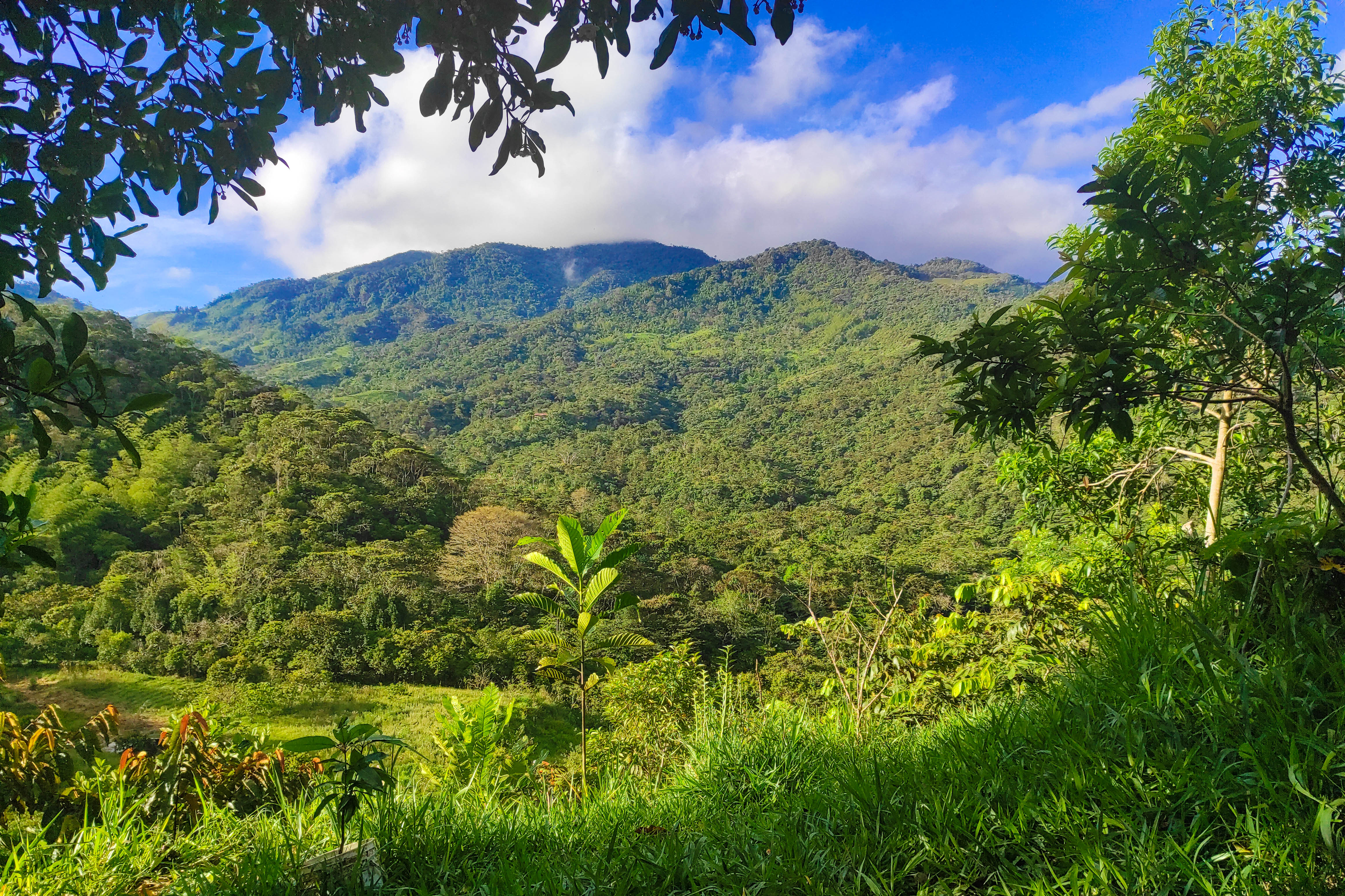
Intro
The hardest part of travel is getting started.
What’s the first step?
Buy a plane ticket. After that things tend to work themselves out.
We have endless reasons not to do things. Not enough money. No time off. Fear of ‘What If?’ But if exploring countries is what you want, those aren’t reasons not to go.
They’re excuses.
I’m not here to convince you to do it. I’m sharing my journey, to prepare you for your future adventure.
I love traveling for unique experiences, exploring nature and meeting amazing people.
Is this your dream too? If so, keep reading!
The first half of 2021 I spent in the stunning country of Colombia. The 2nd most biodiverse country, it has every landscape imaginable. Each minute was unforgettable.
Written below is exactly how I traveled and passed my university semester.
Trip Cost, Where I Stayed, Safety Tips, and more answers to your questions! Although specific to Colombia, this info is useful towards visiting anywhere on Earth.
Definitely reach out if you have any questions, comments or just want to have a conversation!
How Long Was I There?
I left Toronto the morning of January 7th, arriving in Bogota (the capital) at night.
I originally planned to stay 6 weeks…
21 weeks later I was still in South America.
The Canadian Hotel Quarantine introduced in February would have seen me paying more in 3 days than I had that entire month.
So when I was 2 weeks away from returning to Canada, I had to make a decision…
Fuck it, why not?
It was the perfect excuse to keep traveling.
I canceled my return flight and left my trip open ended. I had no clue when I was leaving.
All I knew was it had to be by July 7th.
Coincidentally the day both my travel visa (Maximum 6 months from entry day) and Canadian passport expired (Attempting to renew it abroad is a story for another time).
On June 16th, after 160 days of adventure, I flew out of Colombia from the city of Medellin.
Where Did I Stay?
Hostels
85% of the time I stayed in Hostels, budget friendly places designed to bring people together.
You can find them in every country, and each place is unique.
Tourists, backpackers, digital nomads, all types of people stay in shared dorms or private rooms.
The benefits of a hostel (Other than the price) is it’s incredibly easy to socialize with other guests and hostel workers!
To start a conversation simply ask “ Where are you from?”.
Then you go with the flow.
Shared kitchens allow you to prepare your own meals (Save money and eat healthier), and cook fun group meals with travelers from all over the world!
Most of my cooking skills and recipes come from watching and helping others make their culture’s food.
Hostels are my go-to place to stay, check out Hostelworld to explore your options.
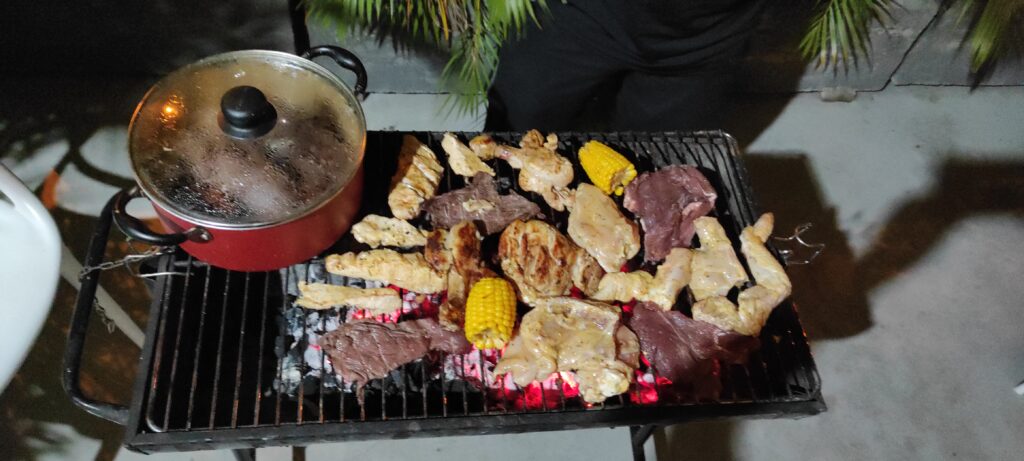
AirBNB / Hotel
5% of the time I stayed here if I wanted some quiet for a few days or if there were no hostels.
Also stayed 5 nights free in an AirBNB my good friend owned (Shoutout Oscar).
Camping
The rest of the time I was out in the wild.
14 nights I slept in a 2 person tent.
Campsites include:
- Lush Andes Mountains (Parque Arvi, Belmira, Guatape)
- Humid Tropical Jungle (San Rafael, San Carlos)
- Arid Desert (Desierto de la Tatacoa)
- Side of a Highway
Nearing the end of my semester in April, I decided to buy all the camping essentials I could fit into my 46L backpack.
Gear from Decathlon:
- 2 Person Tent ($50)
- Sleeping Bag ($60)
- Sleeping Pad ($30)
- Hammock ($20) – Also my pillow at night
- Cooking Pot with Cutlery ($15)
- Foldable Waterproof Jacket ($12)
- Waterproof Hiking Shoes ($60)
Colombia is famous for its nature, so I wanted the full experience.
Being outdoors all day, the afternoon river swims to cool down, cooking over a campfire, fierce nightly thunderstorms.
It felt natural living this way.
There weren’t too many bugs and I didn’t see snakes or other animals that could kill / eat me.
The mosquitos however, chose me as their preferred food over my Colombian companions.
People walking in the street saw my bite covered legs and asked me where these merciless mosquitos lived. I assured them the location didn’t matter, it was my gringo blood that attracted them everywhere I went.
Even with hundreds of bites over the course of my trip, it was beyond worth it!
What Did I Do?
School
From January to April I completed 5 online courses for my Life Science (Sensory Motor Systems) program at McMaster University (3rd Year).
Courses
- Visual Neuroscience (Neurosci 3J03)
- Human Learning and Cognition (Psych 2H03)
- Sport as Religion (Anthrop 2EE3)
- Imagining & Navigating the Future (Innovate 3ZZ3)
- Neural Control: Human Movement (Lifesci 3K03)
I’ll freely admit my grades were far from amazing, but I was thrilled I passed.
The Covid situation resulted in my whole semester being virtual.
So I chose to take advantage of the situation and explore Colombia.
Travel
My Experiences
- Hikes (Valle del Cocora, Parque Tayrona, Cerro Quitasol)
- Up Mountains, across rivers and through the desert, trekking by foot through majestic landscapes is an indescribable feeling. Every view is earned and there are always friends to make on route
- Paragliding (Chicamocha – 2nd Largest Canyon in the World)
- 30 minutes of soaring side by side huge birds. The pilot did acrobatic maneuvers too, an exhilarating feeling when the ground is so far below.
- Rafting (Rio Fonce, San Gil)
- 2 Hours of navigating a level 3 river with an instructor (Nestor, athlete on the National Rafting team).
- Scuba Diving (San Andres)
- 30 minute introductory information (In Spanish)
- 1 Hour underwater in turquoise caribbean waters
- Driving a Golf Cart Around an Island (San Andres)
- $30 to rent a cart the whole day. Explored the whole island and gave rides to hitchhikers.
- Dancing Terribly to Spanish Music
- I look like a toddler with one leg trying to dance compared to South Americans.
- Protesting in El Paro Nacional – And Getting Tear Gassed (Medellin)
- Went with a friend to a nationwide protest against corruption and raising taxes. Definitely a wild time. Feared death twice that day.
- Cooking Shakshuka
- Cooked huge portions of the middle eastern dish shakshuka for hostel owners, friends and travelers. Nothing like food to bring people together.
- Camping With Friends
- Playing Traditional Games
- Tejo
- Throw metal balls at gunpowder embedded in clay. Fun explosions if you hit the target
- Rana
- Throw brass coins into holes on a lead topped table, trying to accumulate an exact number of points
- Tejo
- Graffiti Tours
- Wandering City Streets
- Waterfall Swims (La Cueva Del Esplendor
- Ice cold mountain water is perfect to cool off and get some adrenaline pumping
- Hitch Hiking (Back of Pick-up Trucks, Dump Trucks)
On top of all the amazing things I did and saw, there were 2 other benefits of traveling.
Immersing myself in the culture and perfecting my Spanish..
By the end of my trip I went days without speaking English, using it only when talking on the phone with my parents. Far from perfect and still lacking some vocabulary, but no one can say I’m not fluent.
I’m confident in my ability to communicate and connect with the people of South America in a way it’s hard to do without knowing their mother tongue.
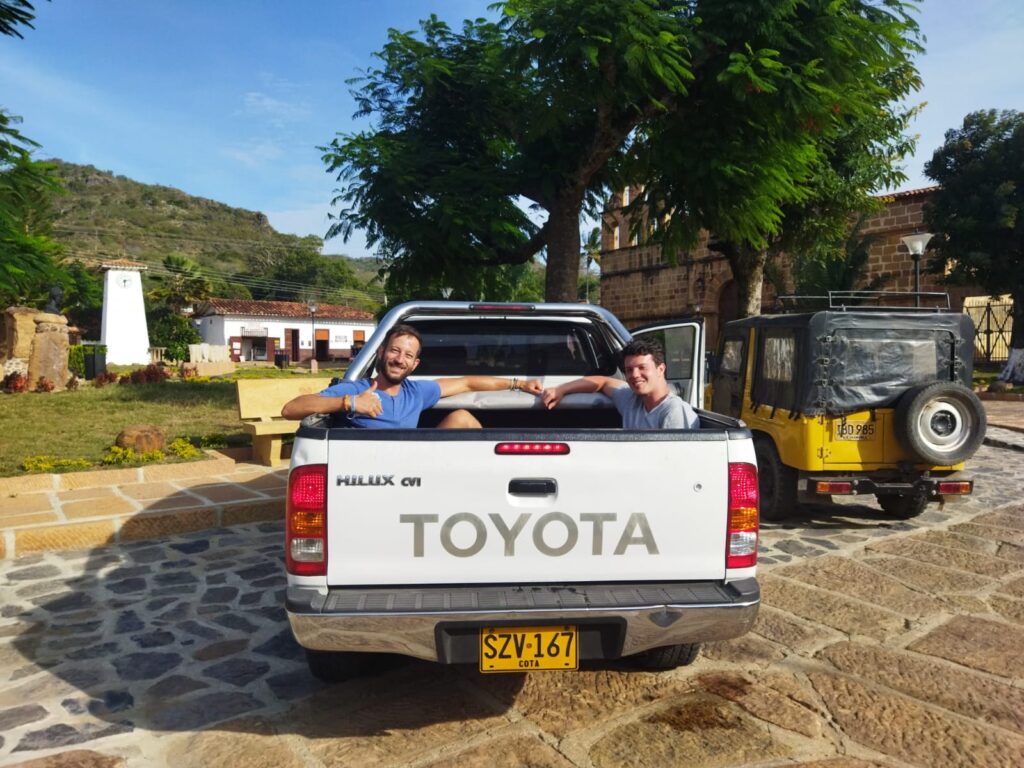
Where Did I Visit?
City
- Bogota (7 Days)
- Cali (5 Days)
- Medellin (3 Months Homebase)
- Santa Marta (5 Days
- Barranquilla (5 Days)
- Cartagena (Day trip)
- Bucaramanga (12 Days)
- San Andres (5 Days)
- Neiva (1 Day)
Pueblo (Town)
- Salento (4 Days)
- Guatape (4 Days)
- Minca (3 Days)
- San Gil (5 Days)
- Barichara (Day Trip)
- Jardin (6 Days)
- Belmira (3 Days)
- San Carlos (2 Days)
Nature
- Valle Del Cocora
- Parque Arvi (6 Days)
- Parque Tayrona (2 Days)
- Chicamocha Canyon
- Reserva Natural Zafra (2 Days)
- Desierto de la Tatacoa (3 Days)
I’d need another 10 years to explore all there is to see.
5 days for a mid-sized city or small town is usually enough for the main attractions.
Some places I spent more time than originally planned for.
I never regretted staying too long, only leaving too early.
In the city of Medellin I found a lively, modern city surrounded by lush, wild mountains.
From mid March until the day I left, Medellin was my home.
During the week I explored the city, riding the metro train above the river cutting through the valley. Cable cars take you up the mountains, providing a stunning view of it all.
On weekends I took buses to nearby towns and got to know the countryside. Always with friends and always in nature.
How Much Did I Spend?
Now for THE question.
How much did all of this cost?
Short Answer: 5 Months = $5500 CAD.
This may sound like a lot of money to you.
But keep in mind people spend a quarter of that amount on a 7 day all inclusive resort.
There are ways to travel cheaper, but ask yourself if it’s worth it for you.
I’m okay with spending on activities like paragliding or scuba diving, and buying fresh local foods when possible.
Saving considerably comes from daily living. Hostels are cheaper than hotels or AirBNBs, and I almost always cooked my own breakfast and dinner.
When I hitchhiked and camped 5 nights with a friend, I spent on food, transportation and a place to sleep a total of $22 CAD.
That’s less than $5 a day!
Ultimately YOU decide where your money goes.
Total Expenses = $5500
Flight There & Back (Copa Airlines)
- $450
Travel Insurance (World Nomads)
- $602.96
Accommodation
- Hostels – $6 – 20 / Night
- Total ~ $1750
Food
- Breakfast – $1 – 3
- Lunch – $2 – 7
- Dinner – $2 – 9
- Total ~ $1750
Transportation
- Bus – $7 – 35
- Local Flights – $30 – 80
- Total ~ $400
Activities
- Paragliding (30 Minutes) = $60
- Scuba diving (1 hour Underwater + Video / Pics) = $50
- Rafting (90 Minutes) = $25
Extra
- Camping gear = $300
- Alcohol = $0.50 / Beer
- Weed = $2 / Gram
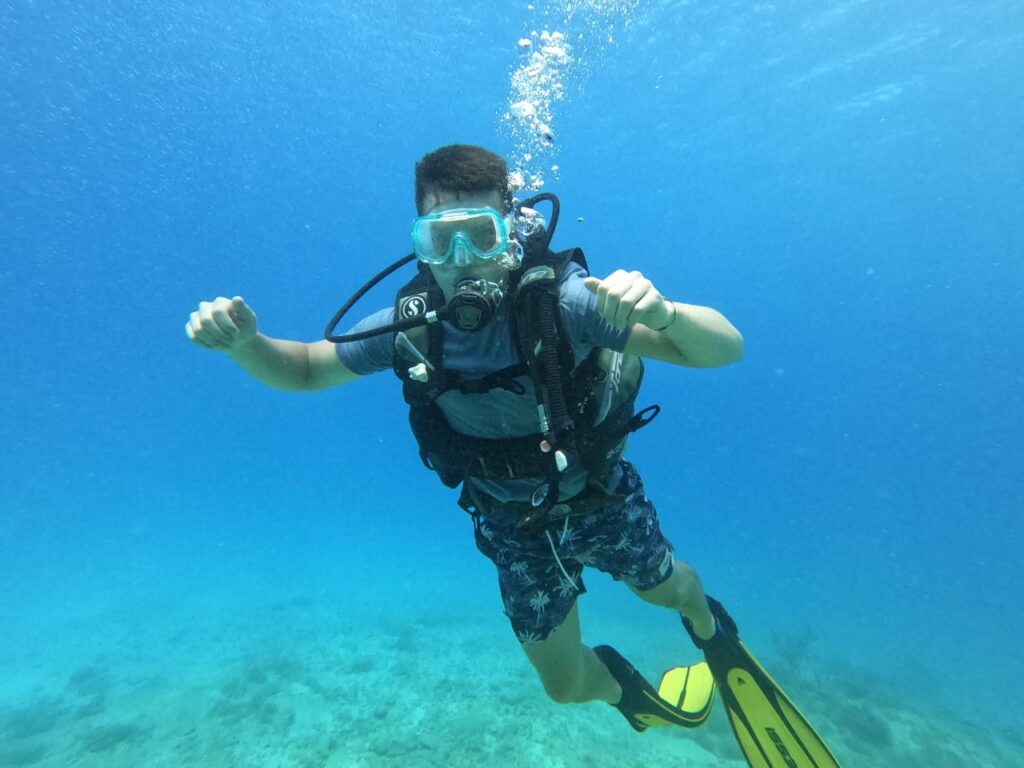
How Safe Is Colombia?
Considerably safer than I thought it would be.
Forget Narcos or whatever else you have in mind.
The Colombia of today is a welcoming and modern country. Striving to change their infamous reputation, the people are incredibly friendly and always have time to help you.
While it is not a perfect place, most dangers are those found in any big city, be it Toronto or Los Angeles. Regions that are unsafe are easily avoidable and out of the way of most itineraries.
There were definitely times I was scared. But it made me a tougher, more capable person.
For me, staying alive and unharmed is the best I can hope for when traveling.
Everything else is just bullshit.
The first morning of my trip I awoke to find my private hostel locker broken into – Missing was $60 USD, a money belt and a set of spare keys for my lock.
What did I do?
I laughed. Because sitting there all alone was my Canadian passport!
The first time in my life I was ‘robbed’, and by a considerate thief!
Fuck it. Take my money!
I’d take that any day over losing my life, or even worse… Waiting in the Canadian embassy for who knows how long.
At least my trip could really only go uphill from that point.
And it did! That was the only incident where something “happened” to me.
Everything else I brought onto myself!
I also hope the guy in the bunk bed below me that left at 6am with my stuff used the money to buy a beer and relax a little.
Again, Colombia is safe if you have some common sense, a few tricks up your sleeve, and the more Spanish you know the better.
Common sense
Rule #1 – Smile
It sounds like cliche bullshit. It’s not.
Being kind and putting on a smile is your best shot at exploring safely and it enriches your whole trip.
People do less bad to good people, and are more likely to help you as well!
I say less because there are always risks in life and shit happens anywhere, anytime.
Between the smiling, curious traveler and the stern faced quiet tourist, who would you rather rob?
People around the world have tough lives while earning a fraction of what Canadians do, so coming across as ungrateful and suspicious attracts trouble.
Learn to smile and ask how someone is and you’ll be thrilled how effective it is.
Rule #2 – When & Where
This ain’t Kansas no more Dorothy!
Always know when and where you are.
A crowded and safe spot during the day can become the opposite before you know it.
Ask locals about what areas are unsafe and at what times.
They know better than the internet, though it doesn’t hurt to look online or ask fellow travelers.
Easy and life saving.
Don’t be in the wrong place or time.
Rule #3 – No Dar Papaya
“Don’t Give Papaya” , the translation of Colombia’s famous saying, is simple..
Avoid being a target and carry only what you’re ready to lose.
Rule 1 and 2 help tremendously, but shit happens.
Walking around with flashy accessories (Watches, Jewelry), your phone exposed (Pockets, in hand, etc) or anything else of obvious value that draws attention is “Giving Papaya”.
Your pockets are NOT safe.
It’s called pickpocketing for a reason.
95% of the time I walked around the city with nothing more than the clothes on my back plus sufficient cash for food, taxis and robbers ($10-20) .
The comfort of knowing you’d give everything down to your underwear in a heartbeat eliminates tons of stress. It shows in your face and body language, making you less of a target as well.
I used a money belt under my shorts for holding ID, phone (Rarely) and larger sums of money (Essential when withdrawing from ATMs).
When I needed directions I asked for help or wrote it on paper beforehand.
If you do bring your phone, keep it out of sight in the streets and use it in safer places like restaurants or stores.
Sometimes it’s best to leave your papaya at home.
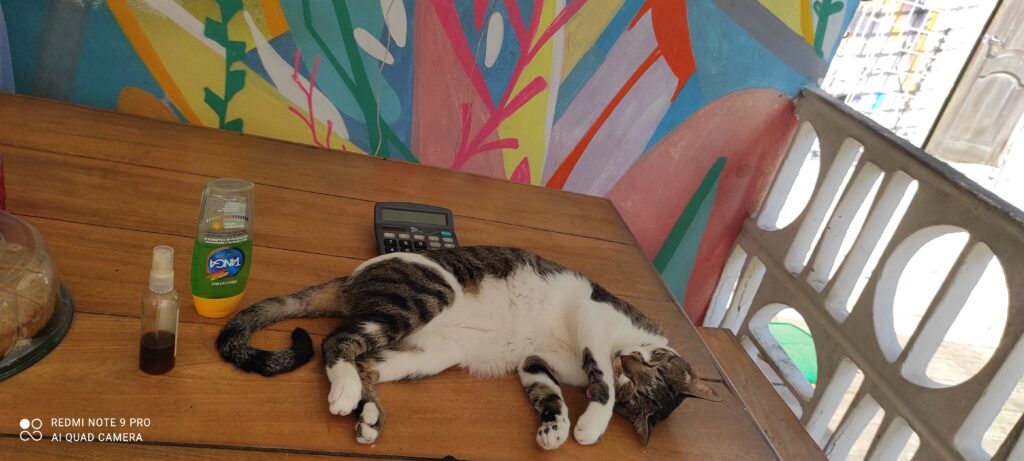
Tricks of the Trade
#1 – Gum
Buy Gum. Give Gum.
Did I stutter?
Go crazy and hand it out to whoever you want, but always have it available for the VIP.
Your Taxi driver.
The risks in a cab are less often getting robbed at gunpoint (although it does happen), but smaller things like running up the meter by “Getting lost” or “Taking a shortcut”, or even starting the meter higher than normal.
Applications like Uber or Didi (South American Version) are generally better because you set your price beforehand and can ID the driver.
But sometimes taxis are the only option.
So when you get into the cab, you say “Hola, buenos días! ¿Quieres un chicle?” ‘Do you want gum?’
Back to the rule of kind people rarely get taken advantage of.
I’ve seen drivers reset their meters after I offered them gum and asked how their day’s going.
It works.
#2 – Fanny Pack
Mentioned before, a money belt or fanny pack or whatever else you want to call it is amazing.
It keeps your pockets free and allows you to put any other flat/smaller valuable out of sight and against your body.
This includes money, passport / other ID, credit cards, phone, and anything else that’ll fit.
I also had a pair of shorts with inner pockets I used together with a money belt.
It’s worn underneath your shirt or shorts, so you get all the usefulness without the fashion statement of a fanny pack.
#3 – One Man Wolfpack
Every solo traveler enjoys being a One Man Wolfpack.
It’s the mentality you need to survive and maneuver any situation, because you won’t always have someone to help you.
However that shouldn’t exclude the advantages of being in a group.
Cheaper taxis.
Nonstop jokes.
And it’s unbelievably safer.
Whether you’re hiking in the mountains or going out to a bar at night, having people you know and trust around you can save your life.
If you get injured they’re there for you, and walking with them at night (I don’t generally recommend in the city) lowers your chance of getting mugged (not fun).
So stay in a hostel, make a few friends, and go do cool shit together.
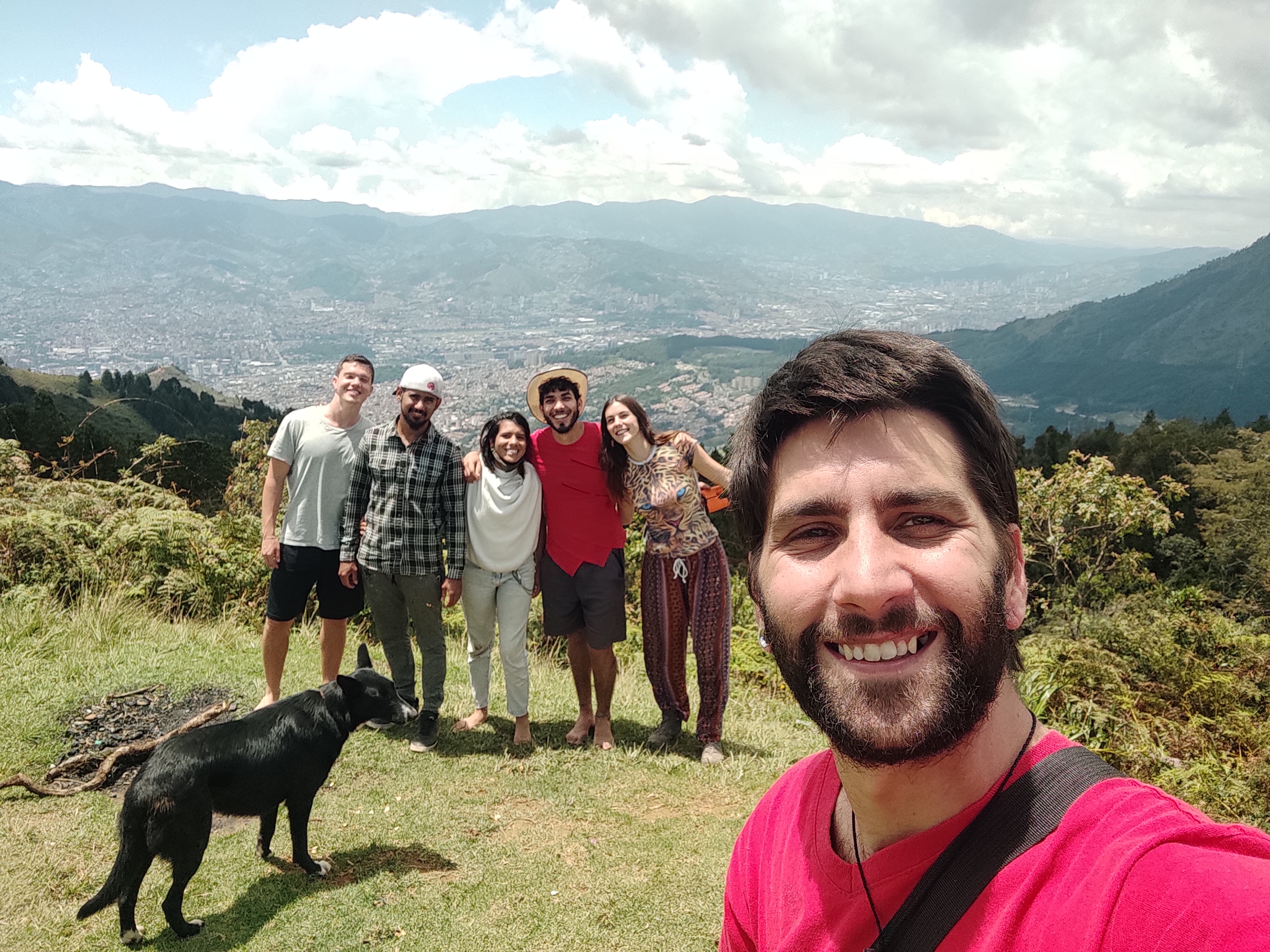
How I Balanced School and Travel?
The goal for my trip was to pass all my classes while doing as much as possible.
Looking back I passed my classes and succeeded in having the adventure of a lifetime.
Mission accomplished.
The circumstance of having an online university semester (hopefully) won’t happen again.
Yet in an increasingly online world, you may have a remote job in the future and consider doing the same as me.
So the tips below are applicable towards balancing online school/work while traveling as well as creating free time in your day to day living.
#1 – Schedules are your friend
Know your commitments and when you absolutely have to give your time.
Write Down:
- When are my Classes?
- Which are Recorded?
- Assignment Due Dates + Grade Value?
This let me know when my free time was, which assignments were worth the trouble, and eliminated tons of stress knowing I’m on top of things.
My work schedule revolved around classes required to attend live.
If I had a 1 hour lecture, I blocked off 3 hours to work on other courses as well.
I had more free time without periods randomly throughout the day.
My average week had 2-4 work periods of 2-4 hours.
You have to figure out what suits you best.
What time of day? How many hours can you focus?
Digital Nomads and others I met who work and roam countries are another example of what’s possible. They work 5-8 hours during the day or night, and do stuff in their free time.
Improvise. Adapt. Overcome.
#2 – Efficiency
We all know someone that claims they’re swamped with work but spends 90% of their ‘Working Time’ fucking around on their phone or going down the Youtube rabbithole.
Don’t be that guy.
If you block off 2 hours to work you better fucking work.
Otherwise you’re wasting time which can’t be regained.
So put your phone away or turn it off.
Understand what you’re working on and what you have to do to finish.
Now start working.
I find working in 25 minute bouts effective, with a 5-10 minute break between each one.
The brain’s cycle of focus is 90 minutes, so you can also work that time followed by a 20-30 minute break.
On break try walking around, doing a few exercises, or relaxing your focus.
Experiment with variables such as time of day, work bout length, with or without music, and find out how to be most productive.
Beyond these tips, it’s up to you to decide how much work you’ll put in.
WIFI can be found in most hostels, although reliability varies greatly. You can also work in coffee shops, libraries or university campuses.
There are always places to work in.
Work Hard. Play Hard.
If you want an easy life stay at home watching Netflix.
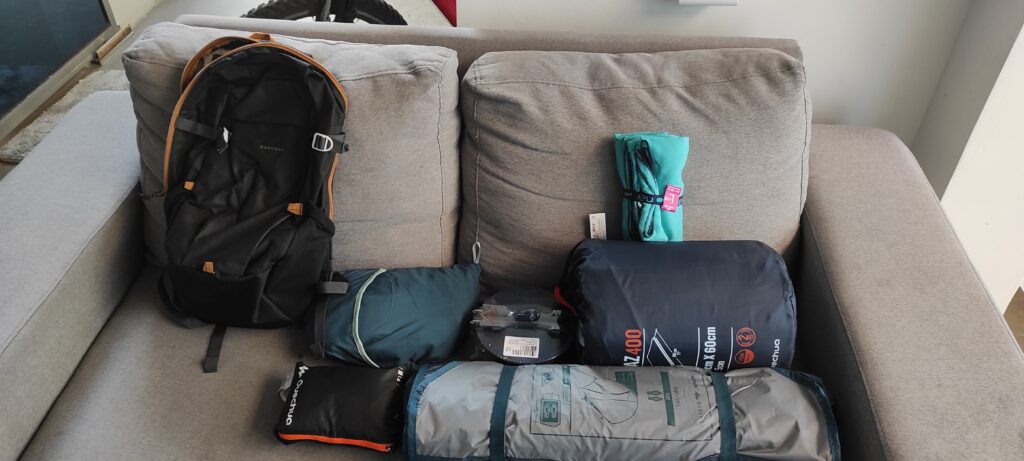
What Did I Bring?
Bags
- Osprey Porter 46L
- Daypack 10L
Clothes
- Dry Fit Shirt (2)
- T-Shirt (3)
- Jeans (1)
- Trackpants (1)
- Shorts (3)
- Underwear (5)
- Socks (6)
- Sweater (1)
- Windbreaker
- Running / Hiking shoes
- Casual shoes
- Flip flops
- Bathing suit
Tech
- Phone (Xiaomi Rednote 9 Pro)
- Laptop (Acer 13”)
- Portable charger (10,000 mAh)
- Kobo Touch
- Wireless earbuds (Soundcore Spirit Pro)
Other
- Journal
- Pen
- Sunscreen
- Bug spray
- Toothbrush + Toothpaste
- Nailclippers
- Locks with keys (2)
- Master Lock Standard
- Wallet
- Money Belt
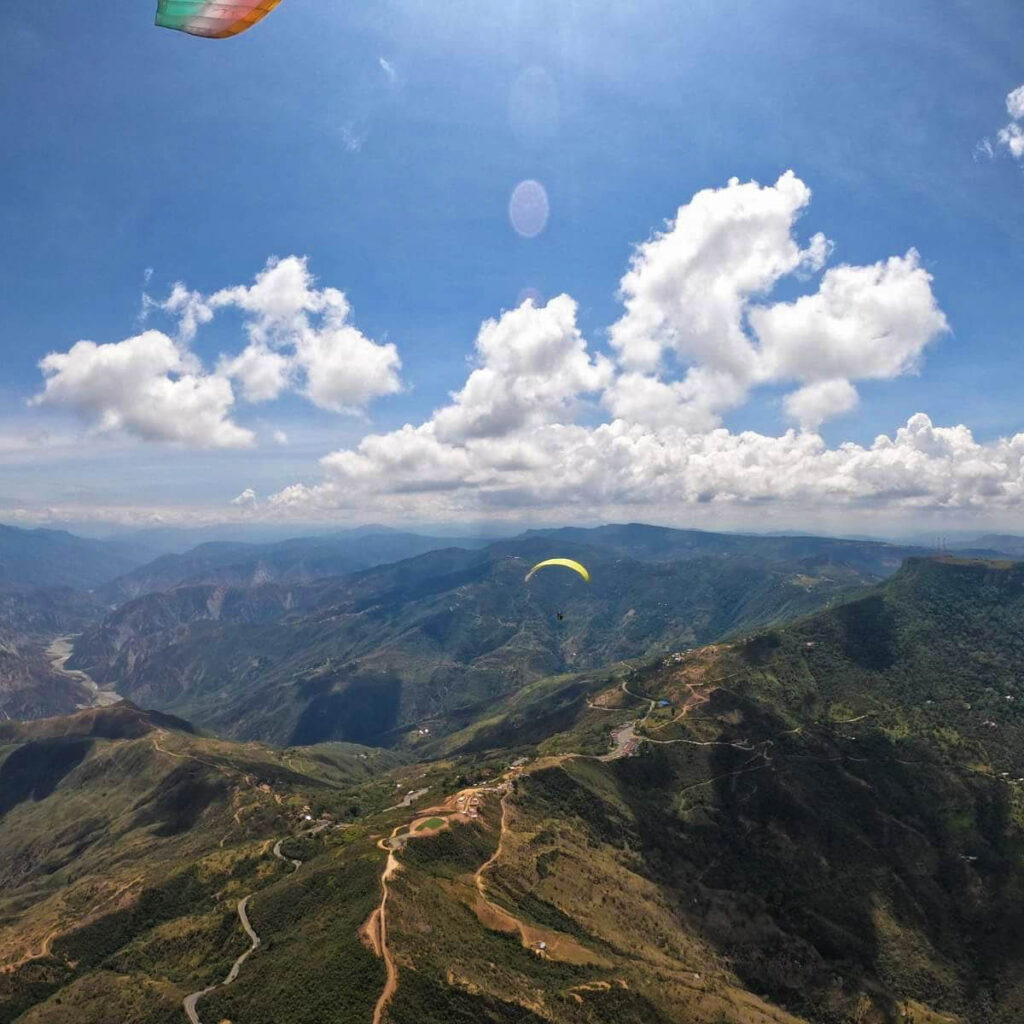
What Now?
It’s your life, not mine!
I hope this helps you feel confident that traveling is possible and easier than it seems.
Here are your first and final steps:
- Choose a destination
- Decide Trip Length and/or Budget
- Book a Flight (Google Flights, SkyScanner)
Everything else will figure itself out.
I’m not special.
I simply decided exploring Colombia was something I’d regret not doing given the opportunity.
Where would you regret not seeing? What’s stopping you?
Life is full of risks.
I could get hit by a car tomorrow and die.
So could you.
I’d rather die having lived the way I wanted to.
Wouldn’t You?
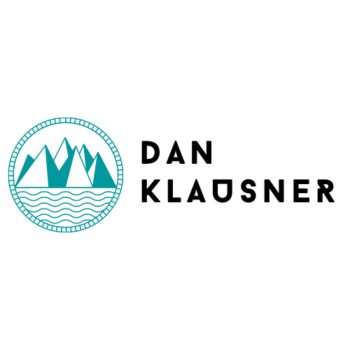
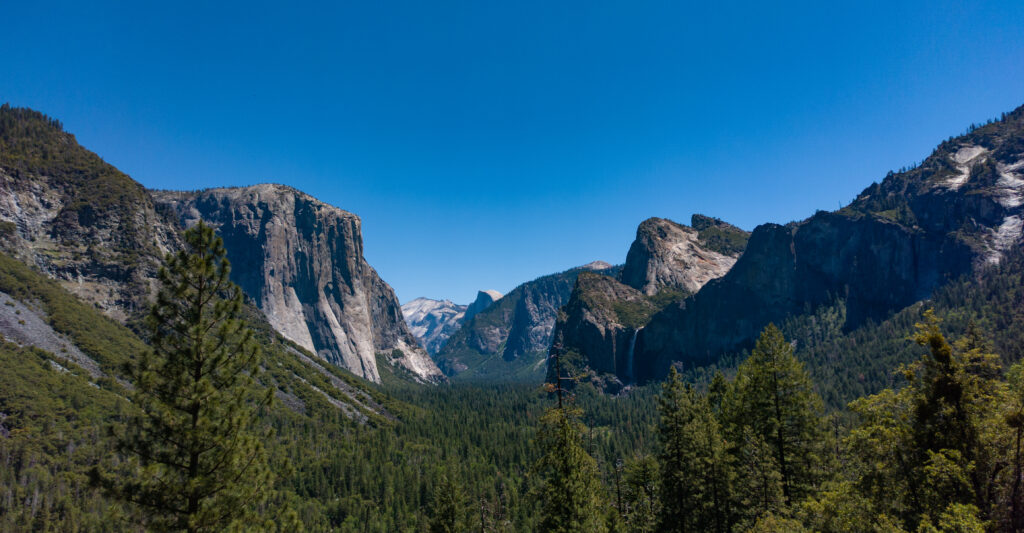
Great read!
Glad you enjoyed!
Super informative! Sounds like an unreal time, thanks for sharing 🙂
Thanks for the support Zach!
Love it! Informative and interesting to read. Really enjoyed the rules you have mentioned.
Fue un placer viajar contigo mano 🙂
Mil gracias hermano, he aprendido mucho de ti, especialmente sobre como reparar maquinas!
Jajjajaa que locura este dia fue… Todavia recuerdo mi “Albert Einstein” experiencia 🤣😂